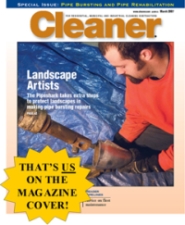What is Pipe Bursting?
If you’re reading this, you believe you need a sewer, water, or storm drain repaired, replaced or installed. Now you want to know the benefits of doing it “trenchlessly” versus traditional excavation. The answer depends on things like how much work is required to excavate it, how important are the things an excavator has to dig through, and the length and depth of the piping to be installed or replaced. Basically it takes the same amount of time to excavate each foot of trench. So as the trench gets longer, the cost goes up proportionally. Makes sense right, because there are no short cuts. The excavator has to remove the dirt (and whatever is in it or over it), set it aside, install the pipe, and then put the dirt back – for every inch of wherever the pipe has to go. If you want to replace or repair an existing pipe trenchlessly you have two choices. You can pipe burst it or you can line it. We do both. There are situations where one works better than the other and they have different costs because they are not the same at all.
Pipe bursting is kind of a poor name because it implies more “violence” that it is. But the original invention was designed to work on piping which would fracture such as cast iron and clay. Modifications have since been made to work with a range of materials and others have tried to make the process sound friendlier by calling it pipe slitting or pipe cracking, but it’s all the same. It basically works by using some powerful equipment to pull a steel cable though the existing line and on the other end of that cable attach a bullet shaped head of some sort. That bursting head is designed to break or split the existing pipe open enough to allow room for a new piping to be pulled in right behind the bullet and in to the original place of the old pipe. The pipe that is installed is usually copper for water lines or high density polyethylene (HDPE) for sewer and drain lines. (See notes about HDPE pipe below.) So the two important differnces when weighing the pipe bursting option versus the pipe lining option is that you end up with a totally brand new pipe and you need access to each end of the old pipe to do it. The cost of getting to both ends of the old pipe is the same whether the pipe to be replaced is 20 feet or 400 feet long. Thus, unlike excavation, the cost per extra foot of piping to be replaced is proportionally smaller the longer the old pipe is.
How the pipe bursting works?


